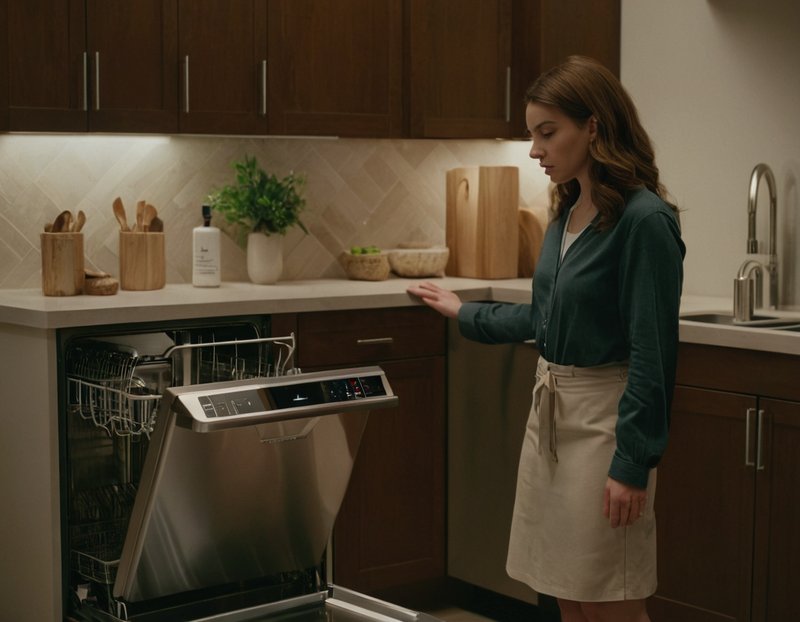
Imagine trying to take a warm shower, but only cold water comes out. Frustrating, right? That’s similar to what’s happening inside your dishwasher. The water isn’t behaving as expected, which can either be due to its temperature or how it’s being supplied. This might not sound like a big deal at first, but it’s something you’ll want to sort out to ensure your dishes are actually getting cleaned properly. Let’s dive into understanding what causes this error and whether it’s still okay to run your dishwasher before you decide to call a professional.
Understanding the E1 Error Code on Your KitchenAid Dishwasher
The E1 error code can be seen as your dishwasher’s way of telling you, “Hey, something’s not quite right with the water.” It’s similar to when your car’s dashboard lights up with a warning sign. For KitchenAid dishwashers, E1 typically means there’s a problem with the inlet water supply or heating. Essentially, your dishwasher needs water at a particular temperature to clean effectively, and if this isn’t happening, it alerts you with this code.
The cause can vary—sometimes it’s a faulty water inlet valve, which is like a tap that’s not opening properly, or a problem with the heating element, which is like trying to fry an egg on a cold pan. These are things you can check at home before calling in the experts. Start by ensuring that the water supply to the dishwasher is turned on and that there aren’t any kinks in the hose that might be preventing water from flowing freely.
Now, you might be asking, “Can I still use my dishwasher if it’s showing the E1 code?” Here’s the deal: It’s generally not advisable to continue using it without checking what’s wrong. While the dishwasher might still run, if the water isn’t heating properly, your dishes won’t be sanitized correctly. This could lead to lingering bacteria—something you definitely don’t want on your utensils and plates.
Steps to Diagnose and Troubleshoot the E1 Error Code
Let’s get into some troubleshooting. First things first—you need to check the water supply. Think of it as ensuring that the faucet is turned on fully and the hose isn’t pinched or blocked. If there’s no issue there, then the problem might be with how your dishwasher heats the water. You can perform a quick test: run your dishwasher on a hot cycle and listen for any unusual sounds. If it sounds different from usual, it could be a hint that the heating element is faulty.
For a potential fix without professional help, you can try resetting your dishwasher. It’s similar to rebooting your computer when it freezes. Simply unplug the dishwasher or switch off the circuit breaker, wait for a few minutes, and turn it back on. This might reset any miscommunications within the system, allowing it to recalibrate.
If these steps don’t resolve the error, calling in a professional might be your next best option. A technician can inspect the water inlet valve or the heating element to see if they need repairs or replacements. It’s important to address these components because ignoring them might lead to more significant issues—or mean replacing the dishwasher entirely, which isn’t a fun prospect.
Preventative Measures to Avoid Future E1 Errors
Nobody enjoys dealing with error codes, so let’s talk about how you can prevent them from popping up again. Regular maintenance is key. Just like a car needs regular oil changes, your dishwasher benefits from a little TLC. Make it a habit to inspect the water inlet hoses every few months to ensure they’re not blocked or damaged. This simple check can save you a headache later on.
Another smart move is to periodically run a cleaning cycle with a bit of vinegar or a dishwasher cleaner. This keeps the internal components clean and reduces the build-up of limescale, which can affect water heating. Think of it as giving your dishwasher a spa day, helping it stay in top-notch condition for longer.
Lastly, always try to use your dishwasher correctly. This means not overloading it, using the right detergent, and choosing the appropriate cycle for what you’re washing. These small actions contribute significantly to preventing errors and extending the life of your appliance.
When all’s said and done, dealing with an E1 error doesn’t have to be overwhelming. With the right knowledge and a bit of routine maintenance, you can keep your KitchenAid dishwasher running smoothly, ensuring your dishes come out spotless and sanitized every time!